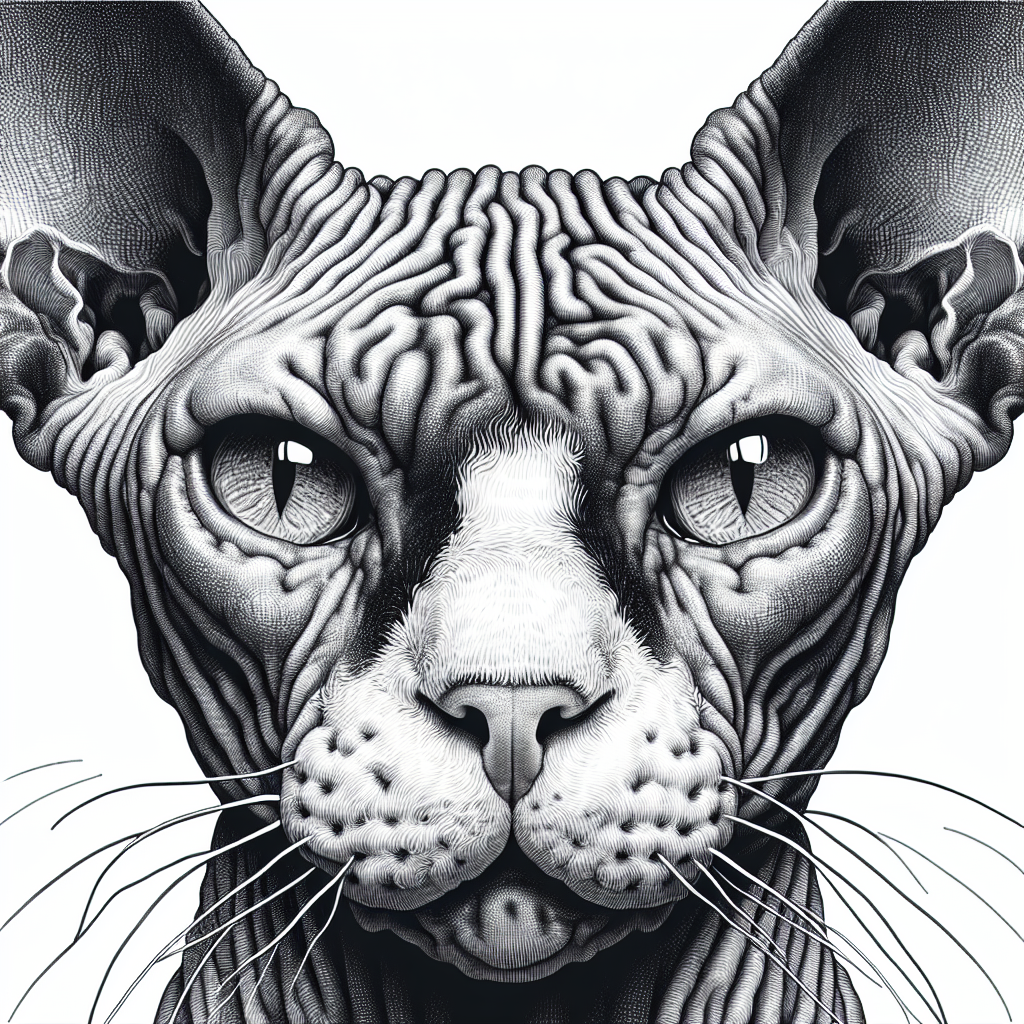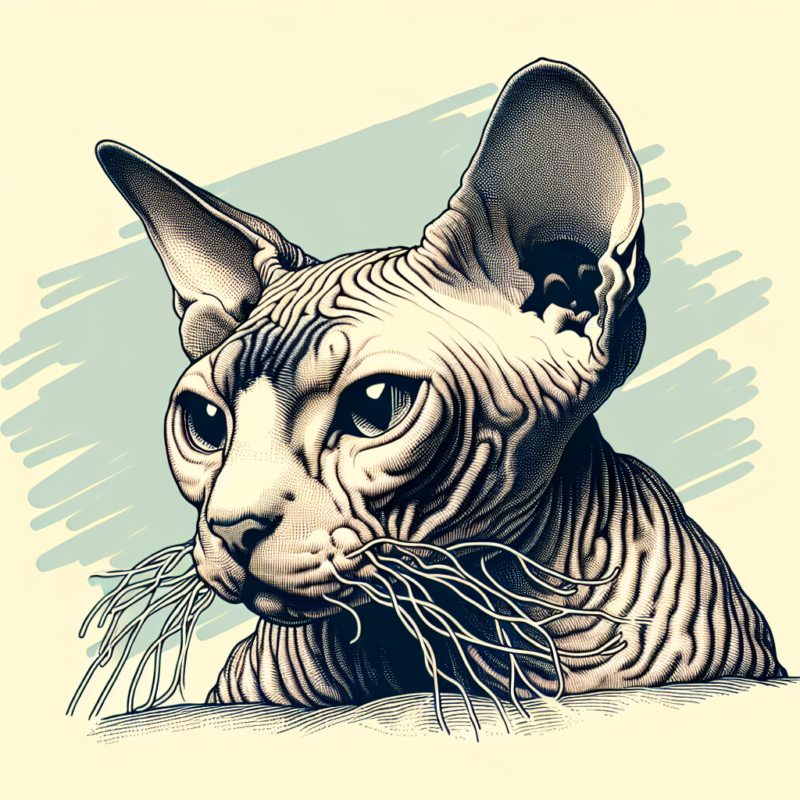Blog
do sphynx cats have whiskers
The Importance of Whiskers for Sphynx Cats: What You Need to Know

Sphynx cats are a unique and fascinating breed known for their hairless appearance. They have a sleek and smooth body, with large ears and almond-shaped eyes. However, one distinct feature that sets them apart from other cats is their lack of whiskers. Many people wonder if sphynx cats are born without whiskers or if they are removed for aesthetic purposes. In this article, we will explore the importance of whiskers for sphynx cats and why they do not have them.
First and foremost, it is important to understand that sphynx cats are not completely hairless. They have a fine layer of downy hair that covers their body, which can vary in length and texture. However, this hair is not enough to provide the same sensory functions as whiskers. Whiskers, also known as vibrissae, are specialized hairs that are longer, thicker, and stiffer than regular fur. They are deeply rooted in the cat’s skin and are connected to sensitive nerve endings, making them an essential tool for survival.
Whiskers serve several important functions for cats, including navigation, communication, and hunting. They act as a cat’s sixth sense, providing them with vital information about their surroundings. Sphynx cats, being hairless, rely heavily on their other senses, such as sight and touch, to compensate for the lack of whiskers. However, this does not mean that they do not face any challenges without them.
One of the main functions of whiskers is navigation. Cats use their whiskers to determine the size and shape of objects in their environment. They are particularly useful in low-light situations, as they can detect even the slightest movements of air. This helps cats to navigate through narrow spaces and avoid obstacles, making them excellent climbers and hunters. Sphynx cats, without whiskers, may have a harder time maneuvering through their surroundings, especially in the dark.
Whiskers also play a crucial role in communication for cats. They use them to express their emotions and intentions to other cats. For example, when a cat is feeling threatened or aggressive, their whiskers will be pulled back, while a relaxed and content cat will have their whiskers forward. Sphynx cats, without whiskers, may have a harder time communicating with other cats, which can lead to misunderstandings and conflicts.
Furthermore, whiskers are essential for hunting. Cats are natural predators, and their whiskers play a significant role in their hunting abilities. They use them to sense the movements of their prey, even in complete darkness. Whiskers also help cats to determine the distance and direction of their prey, allowing them to make precise and swift movements. Sphynx cats, without whiskers, may struggle to catch their prey, making it challenging for them to survive in the wild.
In addition to their functional purposes, whiskers also serve as a form of protection for cats. They act as a warning system, alerting cats to potential dangers. When a cat’s whiskers touch something, it triggers a reflex that causes them to blink, protecting their eyes from harm. Sphynx cats, without whiskers, may be more vulnerable to injuries, especially around their eyes.
In conclusion, while sphynx cats may appear to be missing an essential feature, they are not entirely without whiskers. Their downy hair may not serve the same functions as whiskers, but they still have other senses to compensate for their absence. However, it is crucial to understand the importance of whiskers for cats and how their absence can affect their daily lives. As responsible pet owners, it is our duty to provide our sphynx cats with a safe and comfortable environment that takes into consideration their unique needs.
Debunking the Myth: Yes, Sphynx Cats Do Have Whiskers and Here’s Why
Sphynx cats are a unique and fascinating breed known for their hairless appearance. They have been gaining popularity in recent years, with their distinctive features and playful personalities. However, there is a common misconception that these cats do not have whiskers. This belief has been perpetuated by their lack of visible fur, leading many to wonder if they are truly without this essential feline feature. In this article, we will debunk this myth and explore the truth behind whether or not Sphynx cats have whiskers.
First and foremost, it is important to understand the purpose of whiskers for cats. Whiskers, also known as vibrissae, are long, thick hairs that grow on a cat’s face, above their eyes, and on their chin. These hairs are deeply rooted and are connected to sensitive nerve endings, making them highly sensitive to touch. Whiskers serve as a vital sensory tool for cats, helping them navigate their surroundings and providing them with important information about their environment.
Now, let’s address the question at hand – do Sphynx cats have whiskers? The answer is yes, they do. While it may not be immediately apparent due to their hairless appearance, Sphynx cats do have whiskers. However, their whiskers are often much finer and shorter than those of other cat breeds, making them less noticeable. This is due to the genetic mutation that causes their hairlessness, which also affects the growth and texture of their whiskers.
It is also worth noting that not all Sphynx cats have the same amount of whiskers. Just like with any other breed, each cat is unique and may have varying lengths and thicknesses of whiskers. Some Sphynx cats may have more prominent whiskers, while others may have barely visible ones. This is completely normal and does not affect their ability to use their whiskers for sensory purposes.
So, why do Sphynx cats have whiskers if they don’t have fur? As mentioned earlier, whiskers serve as a vital sensory tool for cats. They help them navigate their surroundings, especially in low light conditions, and provide them with information about objects and surfaces they come into contact with. This is especially important for Sphynx cats, as their lack of fur makes them more vulnerable to temperature changes and potential injuries. Their whiskers help them avoid potential hazards and protect themselves.
Furthermore, whiskers also play a crucial role in a cat’s social interactions. Cats use their whiskers to communicate with other cats, especially during play and grooming. They can also use their whiskers to gauge the mood and intentions of other cats, helping them avoid potential conflicts. This is important for Sphynx cats, as they are known for their social and affectionate nature. Their whiskers allow them to communicate effectively with their feline companions and form strong bonds.
In conclusion, the myth that Sphynx cats do not have whiskers is simply not true. While their whiskers may be less noticeable due to their hairless appearance, they do have them and use them for the same purposes as other cat breeds. Whiskers are an essential part of a cat’s anatomy, and Sphynx cats are no exception. So, the next time you come across a Sphynx cat, take a closer look, and you may just catch a glimpse of their fine, delicate whiskers.

